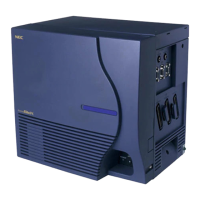INTRODUCTION
11
In addition, cursor keys can be
used as follows.
Since the local soft keys in the Call
screen disappear in this mode, the
local soft keys cannot be used.
Therefore, you need to press the
right cursor key if you need the
Directory, or go to the Favorites
screen if you need the History
screen. For more details, please
contact your administrator.
■DT930 (Touch Panel model)
Tap the system soft key. Only
when the item is selected, the
orange focus is displayed for about
1 second.
■DT920 (Self-Labeling model)
Press programmable key located
side of each soft key.
LOCAL SOFTKEY AREA
The soft keys that are provided by the terminal are
displayed in this area. It is possible to go to
favorite screen, phone book screen and history
screen (same operation as favorite screen).
About Local soft key 2 (Phone book
screen) and Local soft key 4 (History
screen), if this feature is not available
by initial settings, icons are not
displayed. For details, please contact
administrator.
TO START CALL SCREEN
The method of displaying Call screen is as follows.
When a screen other than the Call / Line screen is
displayed and the Call screen is activated with “Auto
Close” method (marked with ○ in the following table),
Call screen is automatically closed by on-hooking or
abandoning the call and the screen return to the original
screen. For details, see "TO CLOSE CALL SCREEN
AUTOMATICALLY".
Call screen may not be displayed
even if the line key on option devices
(8LK/16LK/60 button DSS) is
pressed. Press local soft key 3 (Call
screen) and then press the line key.
When pressing local soft key that is
assigned Call screen.
When the terminal receives an incoming
call (If the line key is assigned, Line
screen is displayed.).
When you lift the handset.
When the terminal receives instructions
from XML application server.
When a pop-up button on the XML
application is pressed.
When the terminal receives instructions
from a system.

